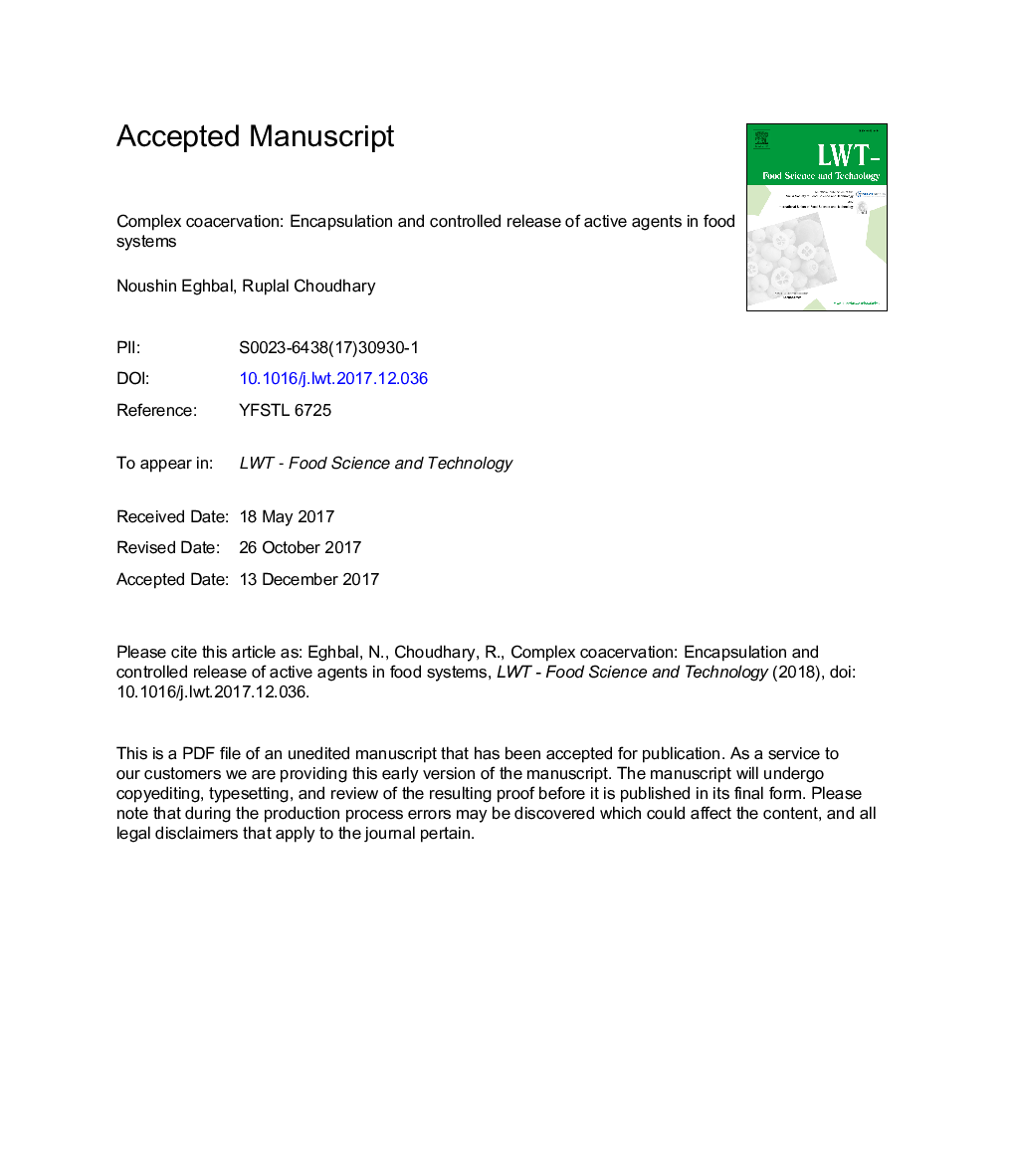| Article ID | Journal | Published Year | Pages | File Type |
|---|---|---|---|---|
| 8891433 | LWT - Food Science and Technology | 2018 | 48 Pages |
Abstract
Complex coacervation is a liquid-liquid phase separation phenomenon occurring between oppositely charged biopolymers through electrostatic interaction. Coacervates are generally produced from proteins and polysaccharides thus they can have a wide range of functionality in various food products. Different factors such as pH, polymer concentration, polymer mixing ratio, ionic strength and thermal treatments have significant effect on the formation of complex coacervates. Practical application of coacervates depends on their viscoelastic properties which has been discussed in this review. Microencapsulation by complex coacervation method is increasingly being utilized in food industry as a result of high encapsulation efficiency and mild processing conditions. This review focused on discussing the most recent studies on the optimization of complex coacervation of different charged biopolymers, microencapsulation of various compounds by complex coacervation and controlled release of agents in food and edible ingredients from coacervates.
Related Topics
Life Sciences
Agricultural and Biological Sciences
Food Science
Authors
Noushin Eghbal, Ruplal Choudhary,
